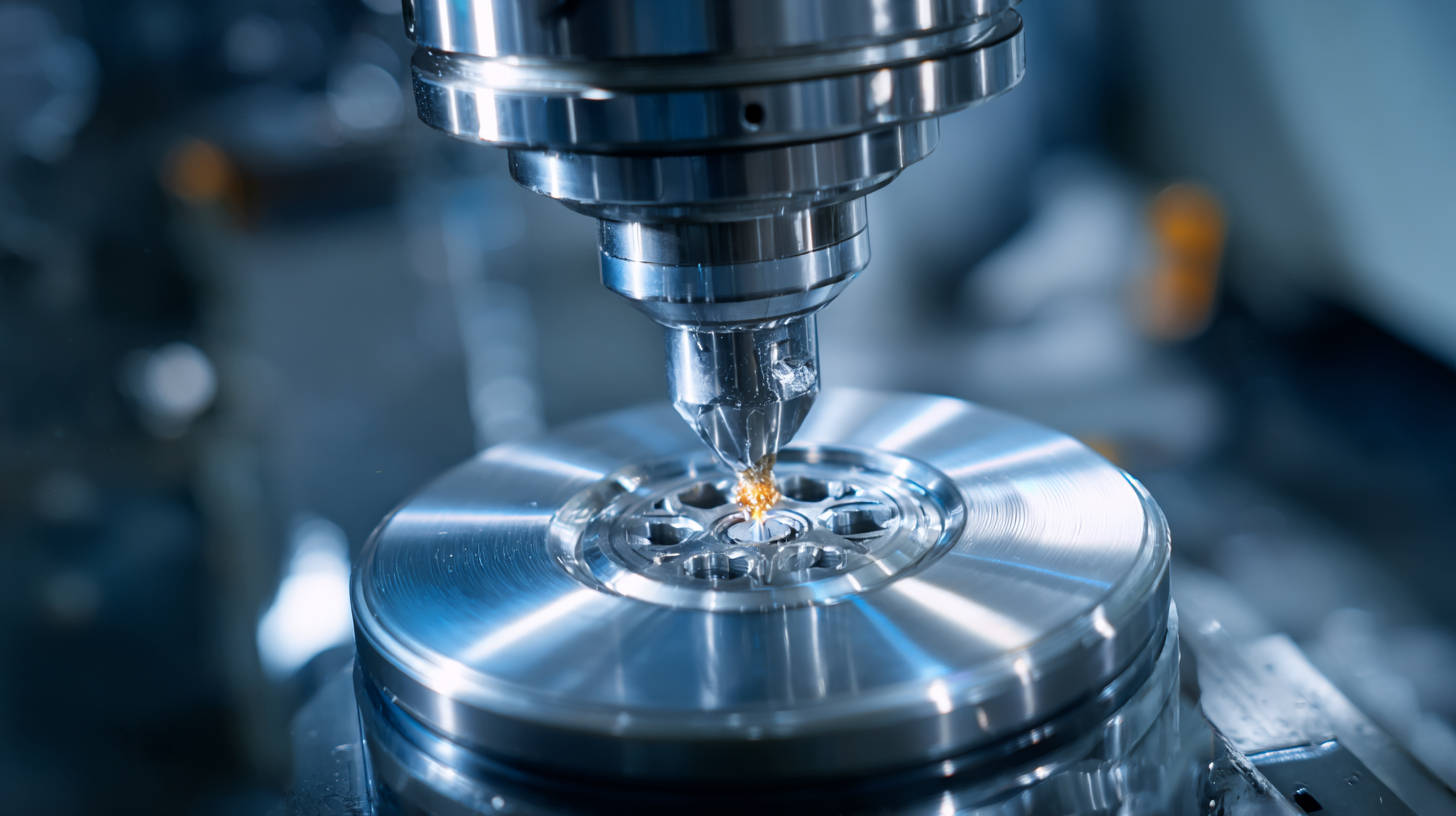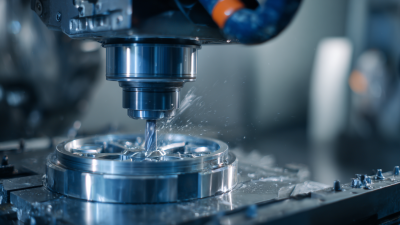
- sales@bjbod.com
- Mon - Sat at 7:00AM to 9:00PM

In the rapidly evolving landscape of CNC machining, precision and efficiency are paramount. The integration of advanced tools like the Angle Milling Head has become a game-changer in enhancing machining techniques. According to a recent industry report by Technavio, the global CNC milling machine market is expected to grow by over 5 billion USD between 2021 and 2025, driven largely by innovations that improve productivity and precision. The Angle Milling Head uniquely allows for versatile cutting operations at various angles, enabling manufacturers to perform complex tasks with unparalleled accuracy. As the demand for high-quality, intricate components escalates across sectors such as aerospace and automotive, adopting advanced milling technologies becomes essential for businesses to maintain a competitive edge. Understanding the applications and benefits of the Angle Milling Head is crucial for any machining operation aiming to unlock new levels of precision and efficiency.

Angle milling heads are essential tools in CNC machining that enhance the flexibility and accuracy of cutting operations. These specialized attachments allow for the adjustment of the spindle angle, enabling a wider range of geometric possibilities in fabrication. When operators utilize angle milling heads, they can achieve precision cuts at various positions, significantly improving the efficiency of complex machining tasks. This capability is particularly beneficial when working on intricate components or parts requiring multiple setups, as it reduces the need to reposition the workpiece frequently.
Understanding the basic principles of angle milling heads involves recognizing their construction and operation. Typically designed with a rotating cutter mounted at an angle to the spindle, these heads can be programmed to execute precise movements that reduce the cycle time and enhance part quality. The integration of angle milling heads into CNC systems opens up new avenues for creating more sophisticated shapes and features, such as contours or slots, that would be difficult or impossible to achieve with standard milling tools. Consequently, mastering the use of angle milling heads presents a significant advantage for machinists aiming to elevate their machining practices.
The angle milling head has emerged as a game changer in CNC machining, particularly when it comes to precision tasks. By enabling machining at various angles without the need for cumbersome setups, angle milling heads significantly enhance efficiency and accuracy. This adaptability is vital for industries demanding high precision, such as aerospace and automotive manufacturing. As the global CNC machine market continues to expand, projected to reach $195.59 billion by 2032, the incorporation of advanced tools like angle milling heads will play a crucial role in meeting production demands.
Tips for maximizing the benefits of angle milling heads include proper calibration to ensure consistent results and investing in high-quality components for enhanced durability. Additionally, utilizing thorough machining strategies can reduce production times while maintaining the quality of the final product. These practices not only contribute to operational efficiency but also align well with the growing market trends emphasizing precision engineering. Embracing such innovations in CNC machining not only enhances productivity but also positions manufacturers to stay competitive in a rapidly evolving landscape.
| Feature | Description | Advantage | Application |
|---|---|---|---|
| Versatility | Can perform a variety of milling operations like face milling, angular milling, and more. | Allows for multiple processes in one setup, saving time and increasing efficiency. | Aerospace components, automotive parts. |
| Precision | Provides high precision and tight tolerances for complex shapes. | Ensures quality and accuracy in finished parts. | Medical devices, molds, and dies. |
| Reduced Setup Time | Milling head can be quickly adjusted to different angles without retooling. | Minimizes downtime and improves workflow efficiency. | Rapid prototyping, custom machining. |
| Chip Removal | Designed for effective chip removal to maintain cutting quality. | Prevents tool wear and helps maintain surface finish. | Manufacturing high-precision parts. |
| Cost-Effectiveness | Reduces the need for multiple machines and tooling. | Lowers operational costs over time. | Small to medium-sized production runs. |
Installing an angle milling head can significantly enhance the capabilities of your CNC machine, allowing for more complex geometries and improved precision in machining. According to a report from the Association for Manufacturing Technology, equipped CNC machines with angle milling heads can achieve accuracy levels within 0.005 inches, thereby increasing productivity by up to 30%. This precision is vital in industries such as aerospace and automotive, where even minor deviations can lead to significant costs or safety concerns.

To install an angle milling head, start by ensuring your CNC machine is powered off and securely mounted. Remove the existing spindle or tool holder, using a torque wrench to avoid over-tightening. Next, align the angle milling head with the machine's spindle, ensuring the indexing pins fit snugly. After securing it with the appropriate screws, calibrate the angle settings using a dial indicator to verify that the head is level.
A study by Modern Machine Shop highlights that proper installation can prevent tool wear and extend the life of both the milling head and the CNC machine, showcasing the importance of meticulous setup in achieving operational efficiency.
The incorporation of angle milling heads into CNC machining has transformed precision manufacturing, enhancing both accuracy and efficiency. According to the 2022 Global CNC Machining Market Analysis Report, the utilization of advanced tool heads like angle milling heads is projected to increase by 30% over the next five years. This advancement enables manufacturers to achieve complex geometries in a single setup, thereby reducing cycle times and minimizing the risk of error associated with multiple tool changes.
Optimizing CNC machining techniques with angle milling heads requires a strategic approach to tool selection and setup. By leveraging multi-axis capabilities, businesses can maximize material removal rates while maintaining tight tolerances. Recent studies indicate that companies employing angle milling heads have reported up to 25% reductions in operational costs, thanks largely to fewer setups and less tool wear. Implementing these heads also allows for improved surface finishes, a crucial aspect in industries like aerospace and automotive, where precision is paramount.
The integration of angle milling heads into CNC machining has brought unprecedented precision and versatility to the manufacturing industry. However, operators may encounter common issues that can affect productivity and part quality. One report from the International Journal of Advanced Manufacturing Technology highlighted that nearly 35% of machining errors stem from improper tool alignment and setup. This emphasizes the importance of thorough calibration and inspection before commencing operations with an angle milling head.

Another frequent challenge is tool wear, which can compromise the finished product's accuracy. According to a study published by the American Society of Mechanical Engineers (ASME), inadequate monitoring of tool life can lead to dimensional deviations of up to 0.05 mm in machined components. To mitigate such risks, employing real-time monitoring systems and regular maintenance schedules is essential, ensuring that tools are replaced or serviced before they reach critical wear points. Understanding and troubleshooting these issues are vital for manufacturers aiming to leverage the full potential of angle milling heads, ultimately leading to enhanced operational efficiency and reduced downtime.





